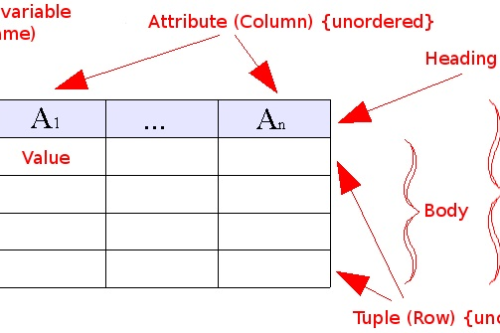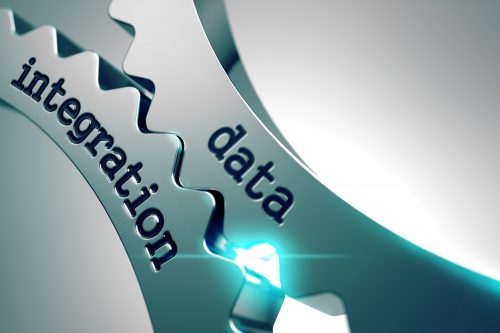Organizations big and small, all over the world, generate copious amounts of data every day. Ideally, all this data should be stored in a single repository, and used by one application that delivers on all business requirements. But in reality, this isn’t the case.
On average, small companies (with less than 1,000 employees) are likely to have a system consisting of at least 22 custom applications, and large organizations with 50,000 employees or more have around 788 different applications in their system. These statistics combine both inbound and outbound applications that an average employee uses.
According to IDG Research, an average employee uses approximately 60 different business applications, four of which are likely to be for collaboration. Moreover, they may be required to use up to 10 of these applications every day.
Using each of these applications is not as challenging as reconciling data collected across your systems to generate intelligent information. This is where enterprise application integration comes in.
What is Application Integration?
Simply put, enterprise application integration is the unification of data sets across all different applications used by a company.
OR
Integrating applications means entering data once and having it available across all platforms. It can also be defined as merging data and workflows between disparate software applications. SAP application integration, java application integration, oracle application integration are a few examples of how data is integrated across multiple channels within an organization.

Diagram of cross functional enterprise application integration. Source: InfocomData
This translates into a lot of things for the business, including:
Advantages of Enterprise Application Integration
- Tackling data silos: Without integration, there is a possibility that information in application A will not match the updated data in application B, thereby reducing the reliability of application A reports and analytics. If a company has 50 different applications, they can have 50 disparate but similar data sets, each having their own drawbacks. To take it up a notch, if employees from different departments choose different data sets to process information they need, the data variances can multiply exponentially.
- Reducing Redundancy: Traditionally, businesses had to input data for each application separately, redoing the same task to get all applications up to speed. This is a problem for businesses in terms of time invested on replicating data, cost of resources involved, and unreliability of analytics.
- Data cleansing at source: Data cleansing is pertinent before data transformation can take place. All data collected by a company may not be usable – data cleansing ensures only relevant data is fed into the system. Data transformations will then convert all the ingested data into business insights. Imagine a company having 50 different data sets, all need to be cleansed individually before the applications can deliver reliable insights. Integration ensures there is one data set across all applications, so all data errors need to be addressed once.

The following enterprise application integration diagram explains how data can be easily integrated in an organization. Source: ScienceDirect
In other words, application integration is making life easier, not only for the employees, but also for C-suites responsible for taking decisions. However, for this to be possible, the enterprise application integration strategy needs to be well-defined.
Find Out How Data Ingestion Tools Can Help Your Business
Applications Integration Framework
According to Gartner, there are three basic purposes of the application integration framework:
- Data consistency: First and foremost, data across all systems must be consistent. All manipulations need to be applied uniformly so every department within the organization is “on the same page”.
- Data access: There’s no point of having 50 different systems if you have no visibility in the functioning of 20 of these systems. There needs to be a dashboard where all data and information is adequately represented as processed by each of the applications.
- Workflow integration: Typically, businesses use a combination of specialized applications across different functions. These applications should be integrated in a manner that facilitates information exchange so that appropriate workflow notifications are triggered based on predefined conditions.
How to Integrate Multiple Applications?
There are two ways to integrate applications on an enterprise level:
- Manually: this involves a hefty amount of data feeding, updating, refeeding, and tracking how and what type of data has been ingested. Most businesses can’t afford time losses that occur alongside.
- Automatically: this involves the creation of a technical mediator that “talks” to all apps within the company, keeping each of these up-to-date with the latest data sets. This typically involves APIs and Web applications or the use of Middleware. Automating application integration can offer real-time (or near real-time) data synchronization across all sources, facilitating the generation of appropriate reporting and meaningful analytics.
Who Needs Enterprise Application Integration?
- Enterprises
- Multinationals
- Governments
- Schools & Universities
- Banks & financial firms
- Energy firms & grid stations
In short, any business using more than one application will need application integration, if not right away, then at some point in future. Period.
Business competition is all about making a well-informed decision at the right time. Business Intelligence (BI) aims to reduce the risk involved in such decisions with predictive analysis and data insights. These analytics, in turn, are based on the data captured by different business applications over extended time periods. Without integration, all of the data is not accounted for, which may lead businesses to make wrong, even lethal, decisions.
Challenges of Enterprise Application Integration
The primary challenge of enterprise application integration lies in data matching. Each application is built on an entirely different schema, which may not line up properly. The equation becomes further complicated when you factor in the possibility of upgrading co-dependent systems.
Different Levels of Enterprise Application Integration
Each business may employ a different enterprise application integration strategy. In general, there are four levels of enterprise application integration:
- Presentation-Level integration: This involves creation of a middleware where all data is stored and processed, thereafter distributed to all other business applications.
- Business Process integration: This involves the use of cloud technologies and automation to enhance business processes that can improve data efficiencies and reduce errors/roadblocks.
- Data integration: Each application speaks a different language. Data integration bridges the gap with code or integration tools, allowing all applications to sync seamlessly via data translation.
- Communications-Level integration: All information may not be used by each application. This level of integration ensures each application can receive just what it needs to function properly.
APIs and Web Applications
Application Programming Interfaces (APIs) were typically used for on-premise infrastructures. These days, however, they’re equally efficient for web-based application integrations as well.
APIs typically work as connectors/adapters to help each application converse with another in a mutually intelligible manner. This application integration framework does not necessarily entail 100% integration: businesses can choose to have specific sections of the applications sharing information, allowing each product to mature in its own way at its own pace.
Middleware for Application Integration
Another important application integration framework involves middleware. While APIs require the applications to talk to each other and often require extensive coding and recoding to accommodate application changes, middleware for application integration connects multiple business applications simultaneously. It creates a central space for all applications to pick up data from, ensuring data consistency and reliability. All data changes updated to the middleware are automatically replicated in each of the integrated applications.
Enterprise Application Integration Approaches
In general, there are two approaches to application integration:
- Point-to-point integration: This involves the creation of links between the applications so that information exchange can take place seamlessly. The applications become co-dependent in this case, so all data transformation and translation is only possible when integration works properly.
- Service bus integration: This involves using a middleware solution where all applications are required to tune in and read data from a central source. Whether the business chooses to migrate all data from legacy systems into newer systems and retire the old ones, or chooses to keep every application in place but has them all synchronized as much as possible, this approach ensures there is one data set available to all employees/departments within the organization.
Conclusion
To sum it all, application integration is essential for reliable business reporting. The C-suite will likely be able to make “well-informed” decisions when the data/information they are basing their decisions on is consistent, reliable, and factually correct. Enterprise application integration delivers all of these, ensuring all business applications are capable of delivering their purpose.







